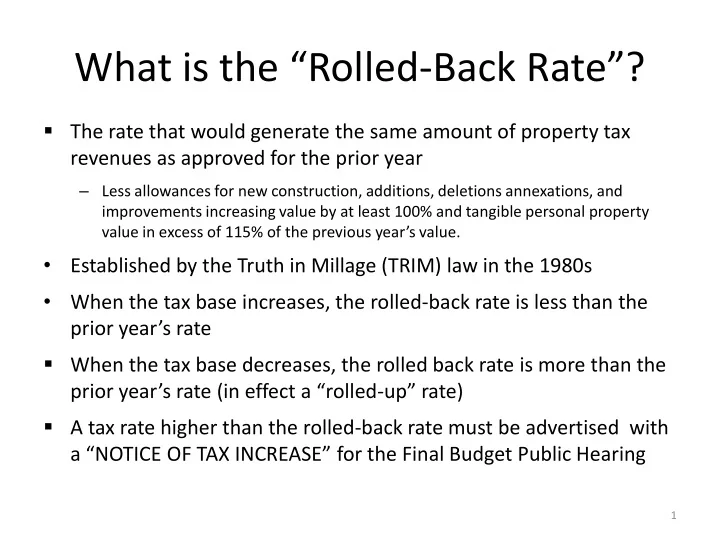

What is the “Rolled - Back Rate”? The rate that would generate the same amount of property tax revenues as approved for the prior year – Less allowances for new construction, additions, deletions annexations, and improvements increasing value by at least 100% and tangible personal property value in excess of 115% of the previous year’s value. • Established by the Truth in Millage (TRIM) law in the 1980s • When the tax base increases, the rolled-back rate is less than the prior year’s rate When the tax base decreases, the rolled back rate is more than the prior year’s rate (in effect a “rolled - up” rate) A tax rate higher than the rolled-back rate must be advertised with a “NOTICE OF TAX INCREASE” for the Final Budget Public Hearing 1
Property Tax Revenue Caps • In 2007, the Legislature enacted new limitations on property tax revenue increases – Note that these are caps based on revenue, not on millage rates • These caps went into effect beginning in FY2009 – The Base Year for the caps is the FY2008 revenue • The caps require super-majority (2/3) or unanimous votes of the Board to approve millage rates that produce revenue above certain thresholds 2
Existing Capacity Under the Cap Capacity under the cap has increased as property tax revenues have decreased There is a wide spread between the current millage rate of 4.8108 and the cap limit of 7.7372 To exceed cap, need unanimous vote for 450 millage rate > 7.7372 400 Millions 350 2/3 vote max millage rate of 300 7.7372 250 Majority vote max millage rate of 200 7.0338 150 Current millage rate 100 of 4.8108 50 - FY2008 FY2009 FY2010 FY2011 FY2012 Budgeted Majority Vote Max 2/3 Vote Max 3
Recommend
More recommend